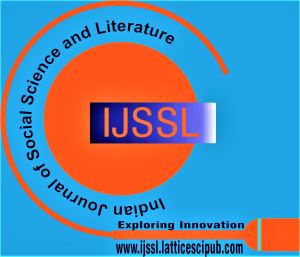![]()
Strategic Convergence in the Arabian Gulf: Evaluating India-UAE Partnership Post 2014
Mohammad Shahnawaz1, Rayees Yousuf Mir2
1Mohammad Shahnawaz, Researcher, Department of West Asian Studies, Jamia Millia Islamia, New Delhi (Delhi), India.
2Rayees Yousuf Mir, Researcher, Department of MMAJ Academy of International Studies, Jamia Millia Islamia, New Delhi (Delhi), India.
Manuscript received on 18 February 2025 | First Revised Manuscript received on 26 February 2025 | Second Revised Manuscript received on 20 May 2025 | Manuscript Accepted on 15 June 2025 | Manuscript published on 30 June 2025 | PP: 19-24 | Volume-4 Issue-4, June 2025 | Retrieval Number: 100.1/ijssl.C116604030325 | DOI: 10.54105/ijssl.C1166.04040625
Open Access | Ethics and Policies | Cite | Zenodo | OJS | Indexing and Abstracting
© The Authors. Published by Lattice Science Publication (LSP). This is an open-access article under the CC-BY-NC-ND license (http://creativecommons.org/licenses/by-nc-nd/4.0/)
Abstract: India’s foreign policy towards West Asia has evolved significantly, expanding beyond traditional concerns of energy dependence. Since 2014, under the leadership of Prime Minister Narendra Modi, there has been a marked emphasis on counterterrorism, defence cooperation, trade diversification, regional security, and the fostering of stronger diplomatic ties. This paper highlights Prime Minister Narendra Modi’s diplomatic achievements in the Gulf region, with a particular focus on the United Arab Emirates (UAE). Following independence, the Gulf states have emerged as key trade and energy partners for India. Under the leadership of Prime Minister Narendra Modi, a transformative “Look West” policy has deepened economic, strategic, and cultural engagements with the Gulf Cooperation Council (GCC) states, particularly with the United Arab Emirates (UAE). Initiatives such as the Comprehensive Economic Partnership Agreement (CEPA), digital financial integration, and the Local Currency Settlement (LCS) system underscore the shift toward more comprehensive cooperation. The article further explores India’s strategic partnership with the UAE, characterised by robust trade, investment commitments, energy security, and diaspora engagement. Cultural diplomacy, epitomized by the inauguration of the BAPS Hindu Temple in Abu Dhabi, also highlights the strengthening of bilateral ties. This study also examines how Modi’s leadership has enhanced bilateral relations, promoting mutual growth and solidifying India’s position amid regional challenges and opportunities in the Arabian Gulf.
Keywords: India’s Foreign Policy, West Asia, Gulf Region, United Arab Emirates (UAE), Comprehensive Economic Partnership Agreement (CEPA), Digital Financial Integration, Local Currency Settlement (LCS), Diaspora Engagement.
Scope of the Article: Political
